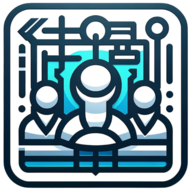How Do You Use Storytelling in the Design Process?
In the realm of UX design, the power of storytelling can transform a project from functional to unforgettable. A User Experience Lead shares how designing with user personas brought narratives to the forefront, while we also present additional answers that highlight the diverse ways storytelling weaves through the design process. From the practical application of translating data into user stories to the art of evoking emotions with interface stories, discover how storytelling is a pivotal element in human-centric design.
- Designing with User Personas
- Case Study Through Storytelling
- Empathize with Narrative UI
- Evoke Emotions with Interface Stories
- Intuitive Flow via Storytelling
- Translate Data into User Stories
- Human-Centric Design Through Stories
Designing with User Personas
For a mental health app, we crafted user personas like "Alex," a stressed college student. His story of juggling academics, social life, and anxiety became our design compass. We visualized his daily struggles, from feeling overwhelmed to finding relief. This narrative shaped the app's features, like mood trackers that felt like daily check-ins, and meditation exercises tailored to his stress triggers. By understanding Alex's journey, we created a product that felt like a trusted companion, offering support and tools at every step. This human-centered approach led to a design that resonated deeply, fostering trust and engagement.

Case Study Through Storytelling
Storytelling played a key role in my first case study during my first UX role. I had to learn how to break the traditional design process by going through different routes of the double diamond and not nailing every part of it. The UX team was a small, new group within an already established organization, so it took some time for all of us to build a process that worked in tandem with our dev team. The challenging part was this: How the heck do I make a case study out of all this stuff? Well, the simple answer my mentor told me was... Storytelling!
Don't just try to mimic everything you've done in school case studies. Discuss the challenges and hurdles your team faced while executing the feature, including the pivots you made and the MVP you chose, as well as what you wish you could have done differently. This makes your case study stand out and differentiates it from all the other competition out there.

Empathize with Narrative UI
Storytelling in UI design serves as the backbone for empathizing with users, allowing designers to envision and tailor user interfaces that reflect the real-world situations of their audience. By framing different user contexts through stories, designers delve into the subtleties of user needs and emotions, crafting designs that resonate on a personal level. This narrative approach ensures the user's voice is heard and integrated from the first draft to the final product, resulting in a solution that's not just aesthetically pleasing but also emotionally relevant.
Conveying user experiences through storytelling can transform a simple interface into a memorable encounter. Consider reviewing your current designs and assess whether they truly reflect the story of your user.
Evoke Emotions with Interface Stories
In the realm of UI design, narratives play a pivotal role in harnessing an interface's power to evoke emotions and captivate the user. Designers use stories to weave an emotional thread throughout the interface, which can forge a stronger connection between the user and the digital experience. By strategically incorporating narratives into design elements, the interface becomes more than just a set of buttons and graphics; it turns into a journey that can elicit joy, anticipation, or even nostalgia.
Crafting an interface that commands emotional investment encourages longer and more engaging interactions. Dive into your latest project and explore how narratives can enhance the emotional depth of your designs.
Intuitive Flow via Storytelling
Utilizing storytelling within UI design promotes an intuitive flow, making for an effortless user experience. As designers map out the steps of the user journey, a story unfolds that guides the user through each interaction as naturally as the plot of a well-told tale. This methodology ensures that transitions between tasks are logical, providing clear direction and reducing user frustration.
The result is a seamless journey across the digital landscape that feels as familiar as the user's own habits. Start mapping out your user journeys with the story you want to tell, and the intuitive pathways will emerge.
Translate Data into User Stories
The translation of user data into relatable scenarios is a crucial aspect of storytelling in UI design. Designers take the cold, hard statistics about user behavior and craft them into stories that have the warmth and detail of real life. By turning data into narratives, seemingly abstract numbers and trends gain meaning and become tools for making more informed and user-focused design decisions.
The story fashioned from the data paints a picture of the users' desires, challenges, and behaviors, allowing for informed tweaks and enhancements to the user interface. Reflect on the data at your disposal, and transform it into a compelling story that will inform your design decisions.
Human-Centric Design Through Stories
At the heart of UI design lies the ability to create with a human-centric approach, and storytelling introduces a powerful way to achieve this. Stories breathe life into designs, infusing them with concepts and nuances that make sense to users on a human level. By embedding features and functions within relatable narratives, designers craft interfaces that feel like extensions of the users' own lives and experiences, fostering a natural and comfortable interaction.
Such human-centered designs anticipate the user's needs and meet them with simplicity and familiarity. Aspire to infuse your next UI project with stories that highlight the human elements in technology.

